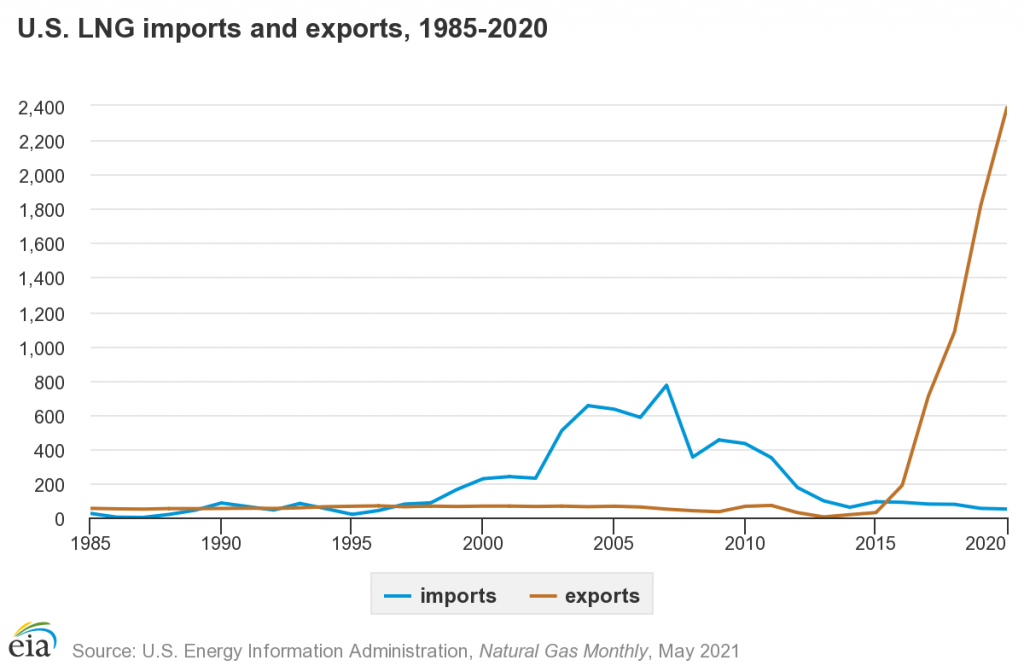Energy is a major issue for the United States. It’s a gateway to economic prosperity and an indicator of quality of life. Energy is also a key component in the safety and security of America. With the LNG boom, that energy future might be changing. The United States has been using more LNG to run its facilities. This has led to a reduction in carbon dioxide emissions from those plants because the plants now use less coal. The result? Environment becomes cleaner and the country experience higher economic growth. Here are some ways that the LNG boom is changing future for the better.
LNG Boom Is Changing America
If there was ever a booming industry in America, this is it. While there is an argument that natural gas is an anti-climate policy, it is undeniable that the LNG boom has improved the environment in a meaningful way. According to the United States Federal Energy Regulatory Commission, there are currently 110 LNG facilities operating in the U.S. performing a variety of services. These plants allow America to make money exporting LNG to the rest of the world and to be blunt, it is a good news for Americans as United States LNG exports have soared over the years.

The Case For The LNG Boom
One of the major benefits to the United States is the many jobs that are being created. In 2020, a year in which gas prices were volatile, the U.S. energy industry had a total of 7.5 million jobs, down 10% from 2019. The number of jobs in the oil industry decreased by 120,300, and the number of jobs in gas related manufacturing decreased by 66,000. While this is was a result of the Corona virus pandemic, it’s still expected that the number of jobs in the LNG sector will pick up eventually as demand rises.
The LNG boom is being driven primarily by the need to find new energy sources that can replace fossil fuels. The LNG industry is based on fracking, which means drilling for gas, fracturing the rock to release it, then putting the gas in the correct pipelines to send it to where it’s needed. The process of fracking is controversial to some, but the natural gas boom is a direct result.
“Growth has been a challenge for the oil and gas industry for several years due to the depressed prices of oil and gas. But, LNG is an opportunity for the U.S. to achieve energy independence,” says David Waelkens, director of the International Business Group at Accenture. “LNG has been made cheaper with new sources of production, such as American shale gas, American energy-saving and American innovation,” he says.
When it comes to the economy, the United States has been a leader in the LNG sector for years. According to the US Energy Information Administration, the US LNG industry now has a global market share of 15%.
The boom has also had an environmental benefit. Gasification and biogas are both processes that remove harmful gasses from gas that was produced from coal. The case for the LNG boom is that with less use of coal and less carbon dioxide emissions, the environment becomes cleaner.
What Are The Benefits Of The LNG Boom?
Of course, one of the best aspects of the LNG boom is that it leads to cleaner air and a cleaner environment. LNG plants are almost all emission-free, so emissions in America will decrease. More cleaner electricity will be generated, as well. This helps the environment because fewer carbon dioxide emissions will be generated from power plants.
The way that LNG is powered has also changed drastically. Initially, it was natural gas-powered plants that fueled America’s booming economy. Now, the majority of LNG plants are equipped to run on other fuels that are better for the environment. The greatest benefit of the LNG boom is that gas is now cleaner and less expensive to run.
Thanks to increased production of natural gas, Americans no longer have to import gas to use at home. The Americans are producing it, and the government has been working to cut down on the energy tax it adds to the price of natural gas.
Are There Any Drawbacks?
The energy boom is being fought by many who oppose pipelines or other means of distribution, because they believe the pollution these pipelines will create. This would be a problem in states like New York, but only at a minimal level. The vast majority of the LNG is used in the United States and the number of pipelines would be too small to cause any serious damage.
Another drawback is that it is a finite resource. With the United States becoming less reliant on coal, they could become too dependent on natural gas. This could also cause price increase for that resource if natural gas demand start to increase again as how it is currently.
Additional concern is the ethane used to make LNG is derived from natural gas. Ethane is a waste product that causes environmental problems. Furthermore, the waste of natural gas used to make LNG is a net loss of energy.
Despite these drawbacks, it is apparent that LNG is here to stay. Overall, the United States is not as reliant on foreign sources of energy as they once were. The LNG boom is a welcome sign for the country’s success.

















